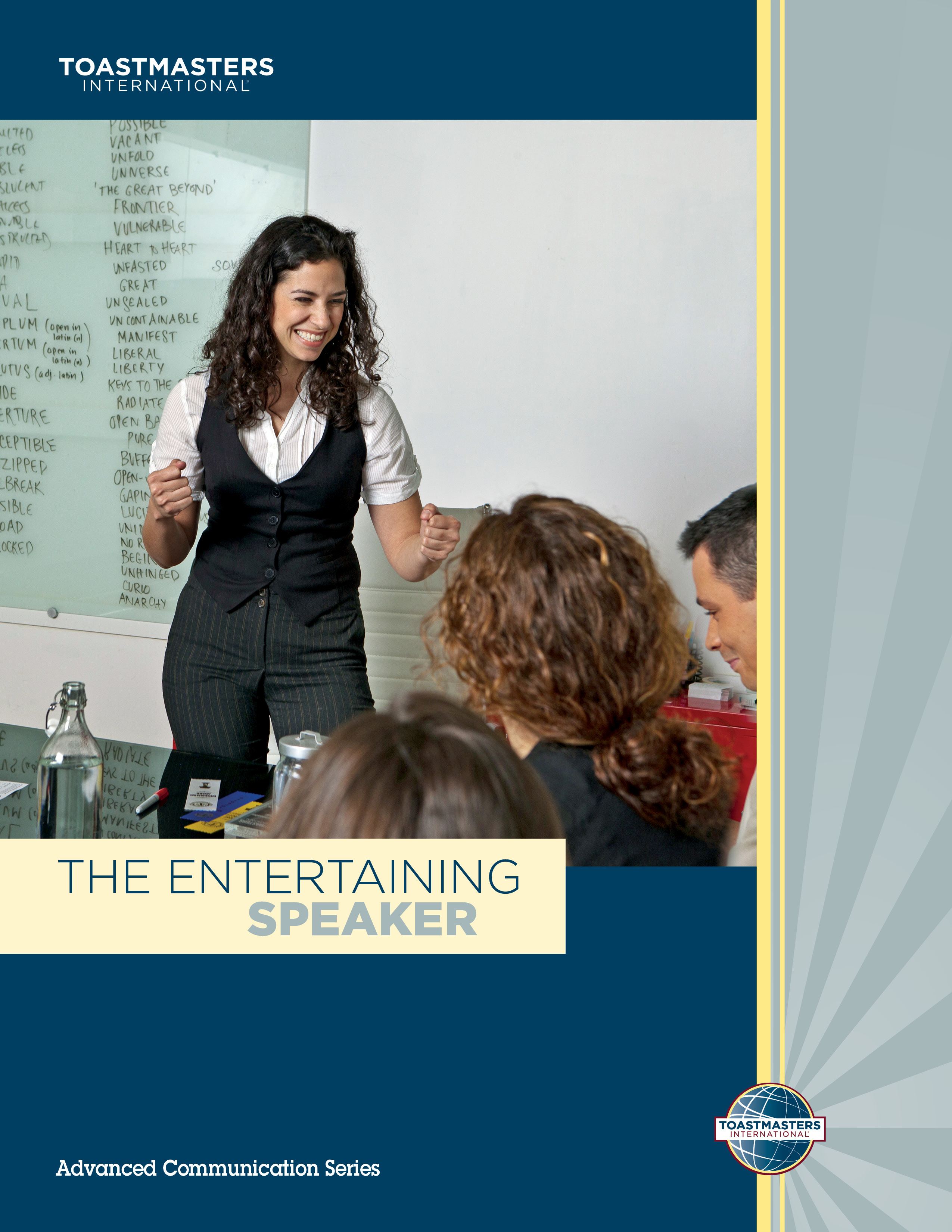Project #1: The Entertaining Speech
Executive Summary:
An entertaining speech need not be funny. It simply gives the audience an opportunity to enjoy themselves in some way. The speech may have a message, but the message is not the major focus of the speech. Relate your talk to the audience and its interests, incorporating personal experiences. Be positive, avoid lecturing and strive for simplicity. The audience should not have to work too hard to follow your presentation.
Objectives:
- Entertain the audience by relating a personal experience
- Organize an entertaining speech for maximum impact
- TIME: 5 to 7 minutes
The purpose of this talk is for the speaker to entertain the audience in a five- to seven-minute talk by relating a personal experience. Pay particular attention to the structure of the talk. Although it will not be as rigidly organized as other types of speeches, it should have some readily apparent organization. In addition to your oral evaluation, please give written answers to the questions below.
Project #2: Resources For Entertainment
Executive Summary:
Stories and anecdotes are an entertaining speaker's lifeblood. Collect and file stories and anecdotes do you can select the right one for every occasion. Then adapt it to make it your own, reflecting your personal speaking style. Make sure your stories and anecdotes relate to your speech topic, are believable and add to your message.
Objectives:
- Draw entertaining material from sources other than your own personal experience
- Adapt your material to suit your topic, your own personality, and the audience
- Use entertaining material as a means of conveying a serious message
- TIME: 5 to 7 minutes
The purpose of this talk is for the speaker to entertain the audience through the use of entertaining stories or anecdotes in a five – to seven – minute presentation. The speaker is expected to draw material from sources other than personal experience and adapt it to his or her own speaking style. The speech should have a central theme or message, which is supported by the use of entertaining stories, anecdotes, or quotations. In addition to your oral evaluation, please answer the questions below in writing.
Project #3: Make Them Laugh
Executive Summary:
Humor is an ideal way to attract and hold an audience's attention. You can also use humor to build rapport, emphasize points, convey a sensitive point, or deal with unexpected incidents that occur during your talk. Humor includes some kind of unexpected twist that pleasantly surprises the audience. Practice delivering the material until you can do so smoothly, pausing before the punch line to create tension.
Objectives:
- Prepare a humorous speech drawn from your own experience
- Strengthen the speech by adapting and personalizing humorous material from outside sources
- Deliver the speech in a way that makes the humor effective
- TIME: 5 to 7 minutes
The purpose of this talk is for the speaker to deliver a humorous speech in five to seven minutes, using original material drawn from his or her own experience as well as material from other sources, adapted to fit the talk. The speech should have some degree of unity and theme and be in good taste. Since this may be the speaker’s first attempt at humor before an audience, be encouraging even if the attempt is less than successful. Please give a written evaluation below in addition to your oral evaluation.
Project #4: A Dramatic Talk
Executive Summary:
Dramatic stories are another way to entertain an audience, through drama you create images in listeners' minds, which enhance and add interest to your message. Vocal variety is critical in a dramatic talk. Vary the volume, pitch and rage of your words. Also convey drama through your body language and facial expressions. Make sure your voice and body language reinforce, not dominate, your verbal message
Objectives:
- Develop an entertaining dramatic talk about an experience or incident
- Include vivid imagery, characters, and dialogue
- Deliver the talk in an entertaining manner
- TIME: 5 to 7 minutes
The purpose of this talk is for the speaker to entertain the audience with a five – to seven – minute dramatic speech. The speech material is to be drawn from the speaker’s personal experience or imagination. The speaker should not act out the incident, but rather interpret it for the audience, using narration and dialogue. In addition to your oral evaluation, please give written responses to the questions below.
Project #5: Speaking After Dinner
Executive Summary:
After-dinner talks are challenging. The audience has just dined and they are becoming drowsy. Your talk should be light, lively, positive and entertaining. Reflect on the occasion. Personalize the talk by referring to earlier events or people on the program and building on them. Use humor and drama
Objectives:
- Prepare an entertaining after dinner talk on a specific theme
- Deliver the talk using the skills developed in the preceding projects
- TIME: 8 to 10 minutes
The purpose of this talk is for the speaker to prepare an after-dinner speech of eight to ten minutes. The speaker should entertain the audience by weaving jokes and / or dramatic or humorous stories around a recognizable theme. The overall effect should be lighthearted and relaxed. In addition to your oral evaluation, please write answers to the questions below.
More information:
Item 226A

No comments:
Post a Comment